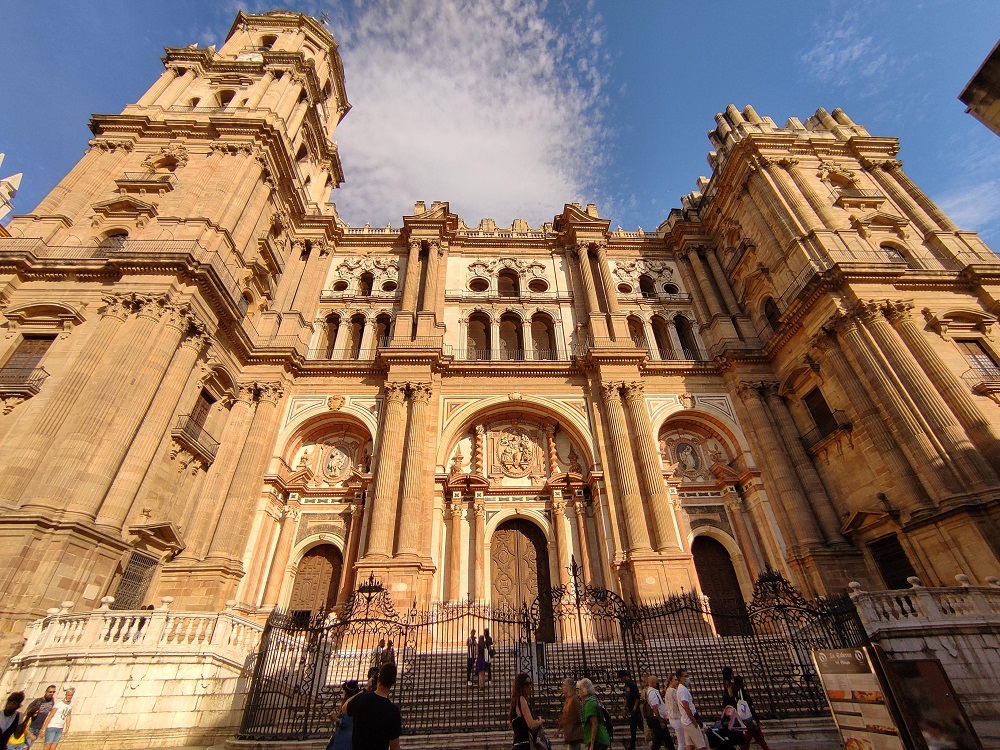I am Juan Carlos García, a seasoned architect and historian based in Seville, Andalusia, with a passion for the rich architectural heritage of my homeland, and today we are going to talk about the influence of Moorish architecture in Andalusian cities.
The influence of Moorish architecture in Andalusian cities is a testament to the region’s rich cultural history and its enduring legacy. From the iconic Alhambra in Granada to the grand Mezquita in Cordoba, the architectural marvels left behind by the Moors continue to captivate visitors and locals alike. This article delves into the profound impact of Moorish architecture on the urban landscape of Andalusian cities and its significance in shaping their cultural identity.
The Moorish Influence: A Historical Overview
The Moors, a Muslim people hailing from the diverse regions of North Africa, including present-day Morocco, Algeria, Tunisia, and Libya, established their rule over Andalusia, a vibrant and culturally rich region in the southern part of the Iberian Peninsula, from the 8th to the 15th centuries. This period, often referred to as the Moorish period, was a time of significant cultural, intellectual, and architectural advancements that left a lasting impact on the region and beyond.
During their reign, the Moors left an indelible mark on the region’s architecture, a testament to their advanced civilization and refined aesthetic sensibilities. They introduced innovative design principles and construction techniques that were far ahead of their time, demonstrating a level of architectural sophistication and technological prowess that was unparalleled in the medieval world.
The architectural style they developed, known as Moorish architecture, is a unique blend of various architectural traditions, including Roman, Byzantine, and Visigothic influences, combined with the Islamic architectural traditions of the Moors’ homeland. This resulted in a distinctive architectural style that is characterized by its intricate geometric patterns, horseshoe arches, and the use of water as a decorative element.
The geometric patterns, often rendered in tilework or carved plaster, are a hallmark of Moorish architecture. These patterns, known as arabesques, are complex and intricate, featuring repeating motifs that create a sense of infinite continuity. The patterns are not merely decorative but are imbued with symbolic meaning, reflecting the Islamic belief in the infinite nature of God.
The horseshoe arch, another defining feature of Moorish architecture, is a type of arch where the curve extends beyond a semicircle, resembling a horseshoe. This type of arch, which originated in the Near East, was adopted and further developed by the Moors, who used it extensively in their architecture, from grand mosques to humble homes.
The use of water as a decorative element is another characteristic feature of Moorish architecture. Reflecting the Islamic appreciation for water as a symbol of life and purification, Moorish architects incorporated water features, such as fountains, pools, and running streams, into their designs. These water features not only added to the aesthetic appeal of the buildings but also served practical purposes, such as cooling and humidifying the surrounding air in the hot Andalusian climate.
Iconic Examples of Moorish Architecture in Andalusia
Andalusia, a region steeped in history and culture, is home to some of the most iconic examples of Moorish architecture. These architectural marvels, scattered across the region’s cities and towns, stand as enduring testaments to the Moors’ architectural prowess and their profound influence on Andalusian culture.
One of the most renowned examples is the Alhambra in Granada. This sprawling palace complex, perched atop a hill overlooking the city, is a masterpiece of Moorish architecture. The Alhambra is renowned for its stunning geometric tilework, a hallmark of Moorish design. These intricate patterns, rendered in vibrant hues, adorn the walls, ceilings, and floors of the palace, creating a visual spectacle that captivates all who visit. The Alhambra is also famed for its lush gardens, which feature a variety of flora, reflecting pools, and fountains. These gardens, designed in the traditional Islamic style, serve as tranquil oases, providing a stark contrast to the arid Andalusian landscape.
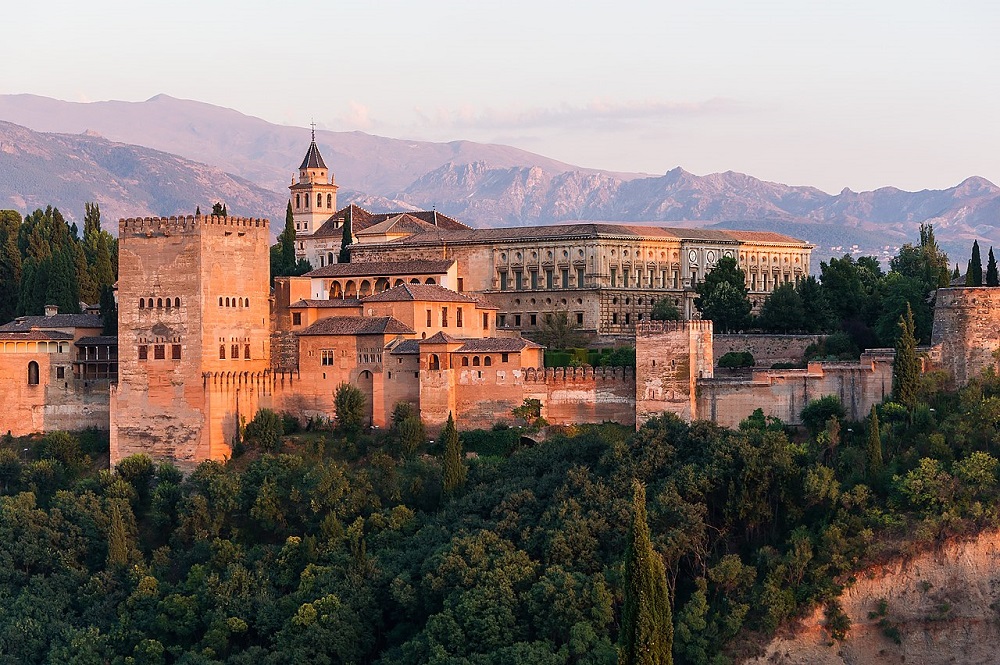

Another iconic example of Moorish architecture in Andalusia is the Mezquita, or the Great Mosque, in Cordoba. This architectural marvel, with its forest of columns and striking red and white arches, is a testament to the architectural prowess of the Moors. The Mezquita’s most distinctive feature is its hypostyle hall, a vast space filled with hundreds of columns that create a mesmerizing forest-like effect. The columns, made from jasper, onyx, marble, and granite, support a series of double arches, painted in alternating red and white stripes. This innovative design, which allowed for greater height and openness, creates a sense of infinite space, reflecting the Islamic concept of the infinite nature of God.
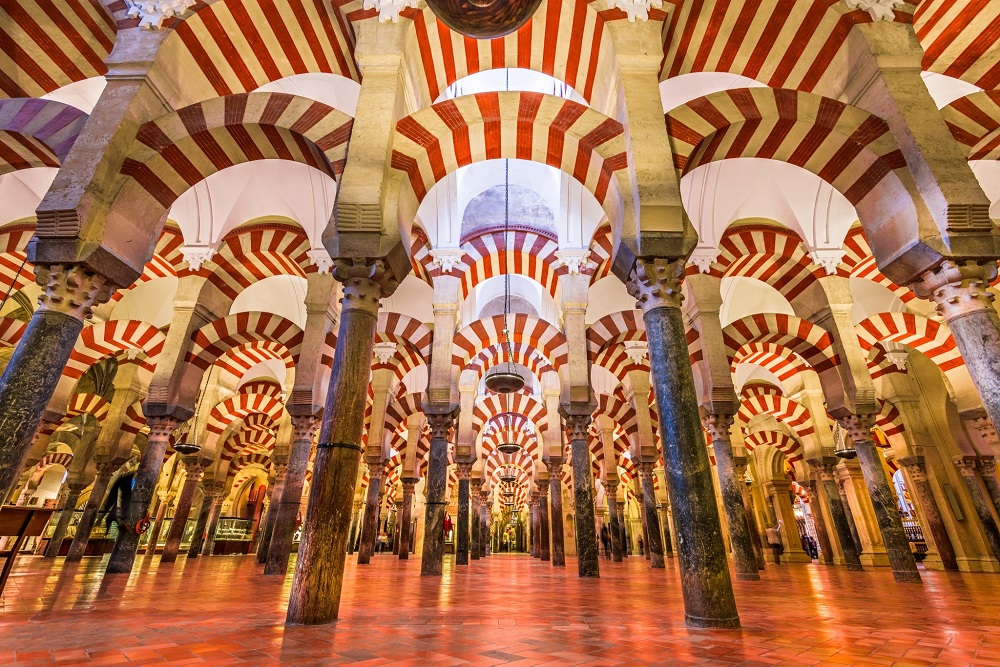

These architectural marvels, along with many others scattered across Andalusia, serve as a constant reminder of the region’s rich Moorish heritage. They continue to captivate visitors with their architectural sophistication, intricate designs, and the sense of history they evoke. Through their enduring presence, they bear witness to the Moors’ significant contribution to Andalusian culture and the region’s architectural landscape.
The Legacy of Moorish Architecture in Andalusian Cities
The legacy of Moorish architecture in Andalusian cities extends far beyond their historical sites and monuments. It permeates the very fabric of these cities, influencing their urban planning and architectural design to this day. This enduring influence is a testament to the profound impact of the Moors on Andalusian culture and society.
One of the most visible aspects of this legacy is reflected in the region’s urban planning. Many cities in Andalusia retain the narrow winding streets characteristic of Moorish design. These labyrinthine streets, which often follow the natural contours of the land, were designed for a variety of reasons. They provided shade in the hot Andalusian summers, facilitated defense, and fostered a sense of community among residents. Today, these narrow streets, with their whitewashed houses and vibrant flower pots, are a charming feature of Andalusian cities, attracting tourists from around the world.
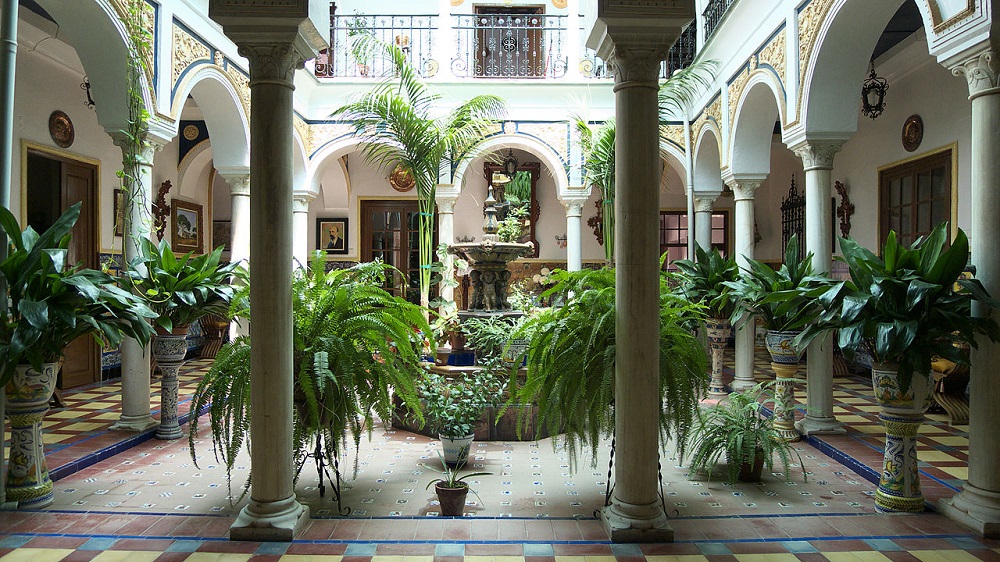

Another characteristic feature of Moorish design that is prevalent in Andalusian cities is the courtyard house, or ‘casa patio’. These houses are built around a central courtyard, which often features a fountain and is typically adorned with plants and flowers. The courtyard, besides being a cool and tranquil oasis, serves as a communal space for the family. This architectural design, which prioritizes communal living and harmony with nature, reflects the Moorish appreciation for community and their love for gardens and water.
This architectural heritage continues to shape the identity of Andalusian cities, serving as a constant reminder of their historical roots. It is a source of pride for the residents and a draw for tourists, who come to experience the unique blend of cultures that is Andalusia. The Moorish influence, evident in the architecture and urban design, adds a distinctive character to these cities, setting them apart from other regions in Spain.
We did a blog about the best places to live in Malaga, having culture in mind, you can read it here: The 10 Best Places to Live in Malaga for Expats | A Local’s Guide
The Influence of Moorish Architecture on Modern Andalusian Architecture
The influence of Moorish architecture on modern Andalusian architecture is not only evident but also deeply ingrained. It is reflected in the continued use of its design principles, which have been adapted and reinterpreted over the centuries to suit contemporary needs and aesthetics. These principles, rooted in a profound understanding of nature, geometry, and the use of space, continue to inspire and shape contemporary Andalusian architecture, adding a distinctive character to the region’s architectural landscape.
One of the key design principles of Moorish architecture that has been embraced by modern Andalusian architecture is the use of geometric patterns. These patterns, often rendered in tilework or carved plaster, are a hallmark of Moorish design. In contemporary Andalusian architecture, these geometric patterns are used in a variety of ways, from decorative elements in building facades to design motifs in interior spaces. They add a layer of visual complexity and aesthetic appeal to the buildings, creating a sense of continuity with the region’s Moorish heritage.
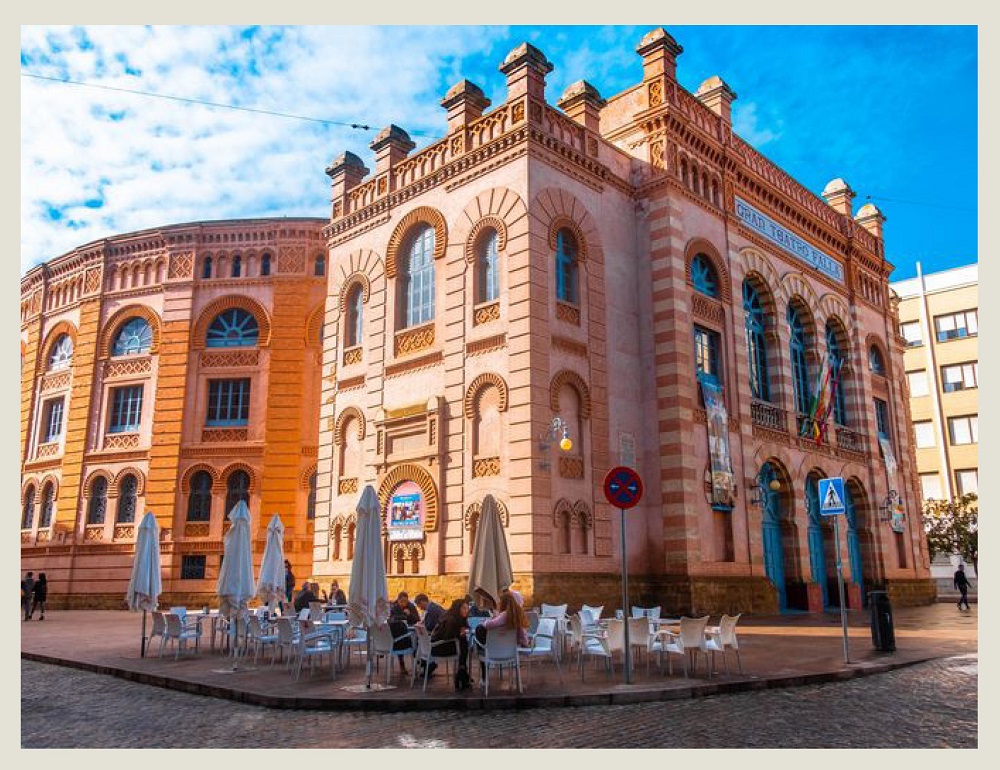

Another design principle that has been adopted from Moorish architecture is the integration of indoor and outdoor spaces. This is reflected in the design of modern Andalusian homes, which often feature courtyards, patios, and terraces. These outdoor spaces, which are seamlessly integrated with the indoor living areas, provide a space for relaxation and social interaction, reflecting the Moorish appreciation for communal living and their love for gardens and water.
The emphasis on natural light is another hallmark of Moorish design that continues to inspire contemporary Andalusian architecture. Moorish architects were masters of manipulating light to create a variety of moods and effects. They used a variety of techniques, such as the use of reflective surfaces, strategically placed windows, and intricate latticework, to control the amount and quality of light entering a space. In modern Andalusian architecture, the use of natural light is a key design element, with architects designing spaces to maximize daylight and create a sense of openness and connection with the outdoors.
The Role of Moorish Architecture in Andalusian Culture and Identity
Moorish architecture plays a crucial and multifaceted role in Andalusian culture and identity. It is not merely a collection of historical buildings and monuments, but a living testament to the region’s rich and diverse history. It serves as a symbol of the region’s multicultural history, a tangible manifestation of the fusion of Islamic, Christian, and Jewish influences that have shaped Andalusia over the centuries.
The Moorish architectural style, with its distinctive design principles and construction techniques, is a testament to the Islamic civilization that once flourished in the region. The intricate geometric patterns, the use of water as a decorative element, and the integration of indoor and outdoor spaces are all hallmarks of Islamic design, reflecting the culture’s emphasis on harmony, balance, and the appreciation of nature.
At the same time, Moorish architecture also bears the imprint of Christian and Jewish influences. The reconquest of Andalusia by the Christian kingdoms in the 15th century led to the transformation of many Moorish buildings into Christian churches and cathedrals. This fusion of Islamic and Christian architectural styles, known as Mudejar architecture, is unique to Spain and is a testament to the region’s multicultural history.
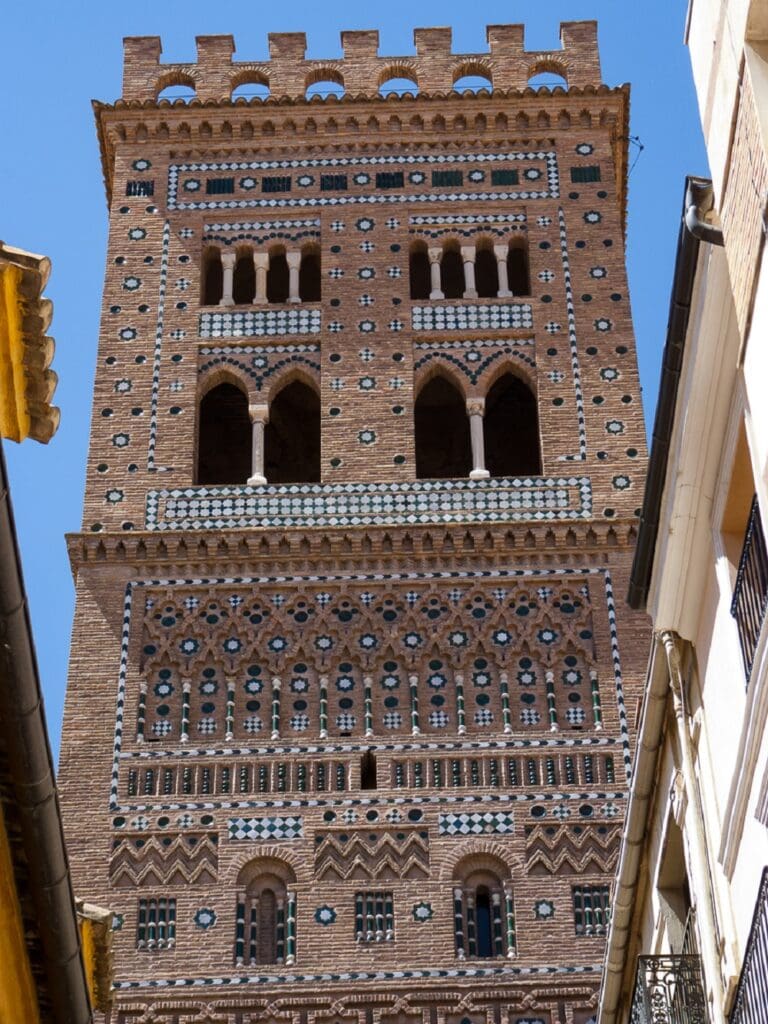

Moreover, the preservation and restoration of Moorish architectural sites serve as a source of pride for the people of Andalusia. These sites are not just tourist attractions, but a tangible link to their past. They are a constant reminder of the region’s rich history and cultural diversity, fostering a sense of identity and continuity.
In contemporary Andalusian society, Moorish architecture continues to shape the region’s cultural and architectural landscape. It influences modern architectural design, urban planning, and even the region’s arts and crafts. It is a source of inspiration for artists, architects, and designers, who draw upon its rich visual vocabulary to create works that are distinctly Andalusian.
Moorish Architecture: A Global Influence
The blend of Islamic, Roman, and Gothic influences that characterizes Moorish architecture has captivated architects and designers worldwide, leading to its incorporation in a variety of architectural styles across the globe. This unique fusion of design principles, which combines the geometric complexity of Islamic design, the structural ingenuity of Roman architecture, and the verticality and lightness of Gothic architecture, has a universal appeal that transcends cultural and geographical boundaries.
From the intricate geometric patterns adorning buildings in the Middle East to the arched doorways and courtyards found in Spanish colonial architecture in the Americas, the influence of Moorish architecture is evident. These design elements, which were once unique to the region of Andalusia, have found their way into the architectural vocabulary of different cultures, attesting to the universal appeal and adaptability of Moorish design principles.
In the Middle East, for example, the influence of Moorish architecture is evident in the use of intricate geometric patterns in the design of buildings. These patterns, which are a hallmark of Moorish design, are used to decorate everything from the facades of buildings to the interiors of mosques, adding a layer of visual complexity and aesthetic appeal.
In the Americas, particularly in regions that were once Spanish colonies, the influence of Moorish architecture is evident in the design of buildings. The use of arched doorways, courtyards, and the integration of indoor and outdoor spaces are all design principles that were borrowed from Moorish architecture. These elements, which are characteristic of Spanish colonial architecture, add a distinctive character to the architectural landscape of these regions.
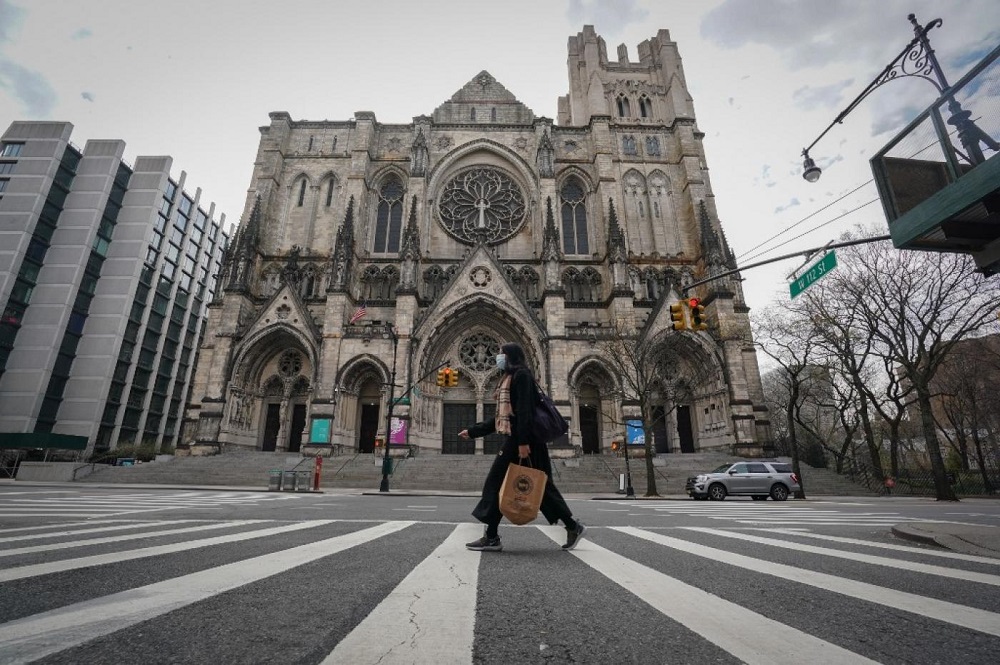

This global reach of Moorish architecture underscores the universal appeal of its design principles and their enduring relevance in contemporary architecture. Despite the passage of time and the evolution of architectural styles, the influence of Moorish architecture remains strong. It continues to inspire architects and designers worldwide, who incorporate its design principles into their work, creating buildings that are not only aesthetically pleasing but also reflect a deep understanding of the interplay between form, function, and the environment.
The Preservation of Moorish Architecture in Andalusia
The preservation of Moorish architecture in Andalusia is a testament to the region’s unwavering commitment to its rich and diverse architectural heritage. Despite the numerous challenges posed by urban development, changing societal needs, and the ravages of time, concerted efforts have been made to restore, maintain, and preserve these historical sites. These efforts reflect a deep appreciation for the region’s Moorish heritage and a recognition of its cultural and historical significance.
Urban development, with its emphasis on modernization and economic growth, often poses a threat to historical sites. In many cases, these sites, with their outdated infrastructure and lack of modern amenities, are seen as impediments to progress. However, in Andalusia, a different approach has been taken. Rather than viewing these historical sites as obstacles, they are seen as assets that contribute to the region’s unique character and charm. Efforts have been made to integrate these sites into the urban fabric, ensuring their survival while also enhancing the cityscape.
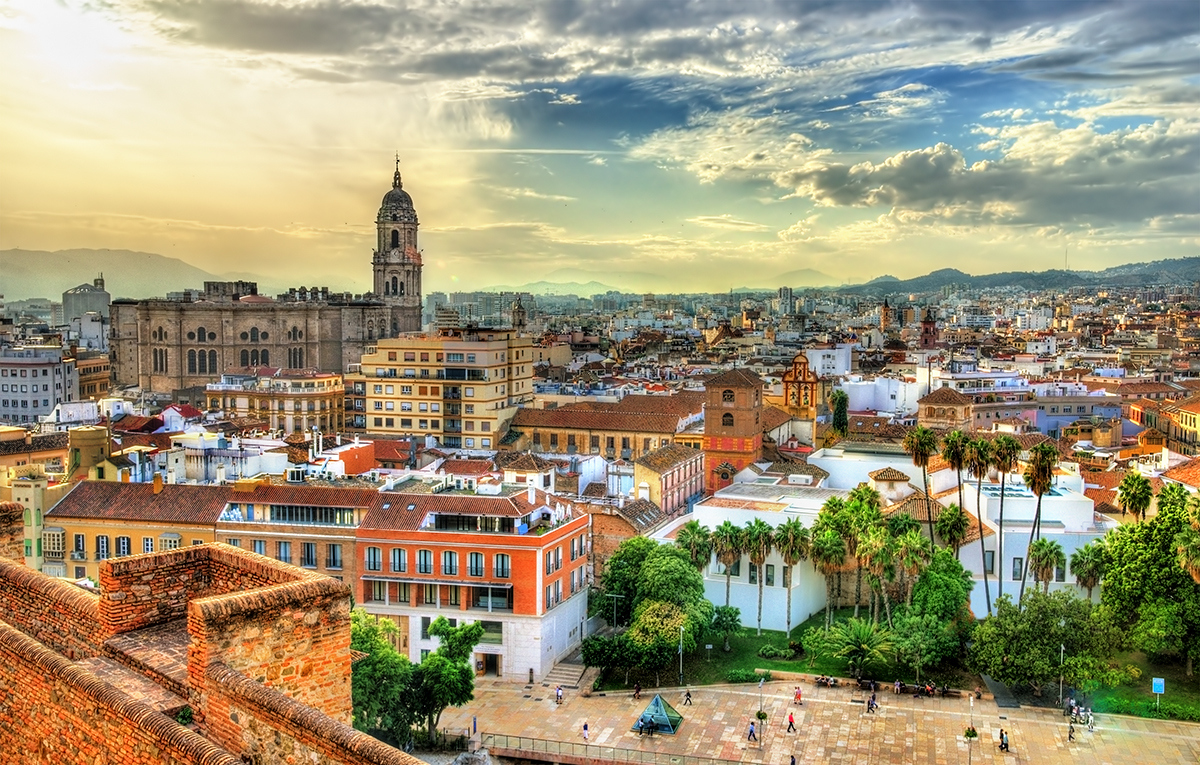

The ravages of time also pose a significant challenge to the preservation of Moorish architecture. These buildings, some of which are over a thousand years old, require regular maintenance and restoration to prevent deterioration and decay. In Andalusia, these restoration efforts are carried out with great care and attention to detail, ensuring that the original design principles and construction techniques are respected. This meticulous approach ensures that these architectural marvels retain their original charm and character, even as they are equipped with modern amenities to meet contemporary needs.
These preservation efforts not only ensure the survival of these architectural marvels but also contribute to the cultural and economic vitality of the region. The preserved Moorish sites serve as a constant reminder of the region’s rich history and cultural diversity, fostering a sense of pride and identity among the residents. They also attract tourists from around the world, contributing to the region’s economy and promoting cultural exchange.
Also read about: Malaga’s Cathedral: All you Need to Know About “La Manquita”
The Challenges of Preservation
Preserving the architectural heritage of Moorish influence in Andalusia is a task fraught with challenges. Many of the region’s most iconic Moorish structures, such as the Alhambra in Granada and the Mezquita in Cordoba, are centuries old and have suffered the ravages of time and neglect. These structures, which were built using techniques and materials that were advanced for their time but are now considered outdated, require constant maintenance and restoration to prevent further deterioration.
Environmental factors such as pollution and climate change also pose significant threats to these historical sites. Pollution, particularly in urban areas, can lead to the degradation of building materials, while climate change, with its associated changes in temperature and precipitation patterns, can cause structural damage to these buildings. For example, increased rainfall can lead to water damage, while higher temperatures can cause materials to expand and contract, leading to cracks and other structural issues.
If you want to learn more about how Climate Change is affecting Andalusia, read this blog: Climate Change and its Effect on Andalusian Agriculture
Moreover, the high costs associated with restoration and maintenance often exceed the resources available, leading to a lack of adequate preservation efforts. Restoring a historical building is a complex and costly process that requires specialized skills and materials. It involves not just repairing visible damage, but also addressing underlying structural issues and ensuring that the building is protected against future damage. In many cases, the cost of restoration can run into millions of euros, a sum that is beyond the reach of many local authorities and preservation societies.
In addition to financial constraints, preservation efforts are also hampered by a lack of public awareness and appreciation of the value of these historical sites. Many people are unaware of the historical and cultural significance of these buildings and see them as relics of the past rather than as assets that contribute to the region’s identity and appeal. This lack of awareness can lead to a lack of support for preservation efforts, further exacerbating the challenges faced by those working to preserve Andalusia’s Moorish architectural heritage.
Urban Development: A Double-Edged Sword
Urban development, while essential for the region’s economic growth and the improvement of living standards, often comes at the expense of its architectural heritage. The pressure to modernize, to build new infrastructure and facilities, and to accommodate a growing population can lead to the demolition of historical structures or alterations that compromise their original Moorish design. This is a trend that has been observed not just in Andalusia, but in many parts of the world where rapid urbanization is taking place.
The loss of these historical structures is a loss of a part of Andalusia’s identity. These buildings, with their distinctive Moorish design, are a testament to the region’s rich history and cultural diversity. They add character to the urban landscape, serve as landmarks, and attract tourists, contributing to the region’s economy. Their loss, therefore, is not just a loss of architectural heritage, but also a loss of economic potential.
Balancing the need for development with the preservation of Andalusia’s Moorish architectural heritage is a complex issue that requires careful planning and policy-making. It is a task that involves multiple stakeholders, including government agencies, urban planners, architects, preservation societies, and the local community. It requires policies that encourage sustainable development, that take into account the value of architectural heritage, and that provide incentives for preservation.


One approach to achieving this balance is through adaptive reuse, where historical buildings are repurposed for modern uses while preserving their architectural features. This not only saves these buildings from demolition but also gives them a new lease on life, allowing them to continue contributing to the urban landscape and the local economy.
Another approach is through the establishment of heritage conservation districts, where development is regulated to preserve the historical character of the area. This can include restrictions on alterations to historical buildings, guidelines on new constructions to ensure they are in harmony with the existing architectural style, and incentives for the restoration and maintenance of historical structures.
Education and Awareness: Keys to Preservation
One of the most effective ways to ensure the preservation of Moorish architecture is through education and awareness. By educating the public about the value of these historical structures, their historical context, and their significance to Andalusia’s cultural identity, we can foster a greater appreciation for Moorish architecture and generate support for its preservation.
Education can take many forms, from formal education programs in schools and universities to informal learning opportunities such as guided tours, exhibitions, and public lectures. By incorporating the study of Moorish architecture into the curriculum, we can ensure that future generations understand its value and significance. This can inspire a sense of stewardship and motivate them to participate in preservation efforts.
Public awareness campaigns are another effective tool for promoting the preservation of Moorish architecture. These campaigns can use various media, including print, television, and social media, to reach a wide audience. They can highlight the beauty and uniqueness of Moorish architecture, share stories about its history and cultural significance, and inform the public about the threats it faces and the efforts being made to preserve it.
Community involvement is also crucial in these efforts. The local community has a vested interest in the preservation of their architectural heritage, as it contributes to their sense of identity and pride in their locality. By involving the community in preservation efforts, such as volunteer programs for maintenance and restoration work, we can foster a sense of ownership and responsibility towards these historical structures.
The Role of Technology in Preservation
Advancements in technology have opened up new possibilities for the preservation of Moorish architecture. Digital tools such as 3D scanning and modeling allow for the accurate documentation of historical structures, providing a valuable resource for restoration efforts. These technologies enable us to capture detailed information about the structure, design, and condition of these buildings, which can be used to guide restoration work and ensure that it is carried out with the utmost accuracy and respect for the original design.
3D scanning, in particular, has revolutionized the field of architectural preservation. This technology uses lasers to capture precise measurements of a building’s structure and features, creating a detailed 3D model that can be viewed and analyzed on a computer. This allows for a level of detail and accuracy that was previously unattainable, making it an invaluable tool for preservation efforts.
In addition to aiding in the restoration of existing structures, these digital tools can also be used to preserve a record of Moorish architecture for future generations. By creating digital archives of these structures, we can ensure that the knowledge and appreciation of Moorish architecture endure, even if the physical structures themselves are lost to time.
Virtual reality (VR) and augmented reality (AR) technologies also offer innovative ways to engage the public and foster an appreciation for Moorish architecture. These technologies allow users to explore and interact with digital recreations of Moorish architectural sites, providing an immersive experience that brings these historical structures to life. Users can explore these sites at their own pace, examine architectural details up close, and even view reconstructions of how these sites might have looked in their prime.
For example, a VR tour of the Alhambra could allow users to explore its intricate tilework and lush gardens, while an AR app could overlay historical information and architectural details onto a live view of the site. These experiences can make Moorish architecture more accessible and engaging, particularly for younger generations who are native digital users.
We talk about other Andalusian technology advacements in the following blogs, if you are interested:
Ana León’s Research on Microglia Cells at UMA: Neuroscience
Andalusia and Its Role in Spain’s Renewable Energy Transition
Community Involvement in Preservation Efforts
Community involvement is a crucial component of preservation efforts. Local communities have a vested interest in the preservation of their architectural heritage, as these structures are not only a part of their history and culture, but also contribute to the local economy through tourism. Their participation can significantly enhance these efforts, bringing in local knowledge, resources, and a sense of commitment that can be invaluable in preservation work.
Community-led initiatives, such as volunteer programs for site maintenance, can play a significant role in the preservation of Moorish architecture. These programs can involve local residents in the care and upkeep of these historical sites, from cleaning and minor repairs to monitoring for signs of damage or decay. This not only contributes to the physical preservation of these structures but also fosters a sense of community pride and ownership. When people are involved in the care of these sites, they are more likely to value and protect them.
Fundraising events are another way that communities can contribute to preservation efforts. These events can raise funds for restoration work, maintenance, and other preservation-related costs. They can also raise awareness about the importance of preserving Moorish architecture and engage the wider community in these efforts. Fundraising events can take many forms, from charity runs and cultural festivals to art auctions and benefit concerts. These events can bring the community together, celebrating their shared heritage while raising funds for its preservation.
In addition to these initiatives, communities can also play a role in advocacy and policy-making. They can lobby for policies that protect historical sites, provide funding for preservation work, and promote sustainable development. They can also work with local schools and educational institutions to incorporate the study of Moorish architecture and heritage preservation into the curriculum, fostering an appreciation for these structures among the younger generation.
The Role of Government and Non-Governmental Organizations
Government agencies and non-governmental organizations (NGOs) play a vital role in the preservation of Moorish architecture. Their involvement is often multifaceted, encompassing a range of initiatives aimed at protecting, preserving, and promoting these historical structures.
Government initiatives are crucial in this regard. One of the key measures taken by governments is the designation of historical sites as protected landmarks. This provides legal protection to these sites, preventing unauthorized alterations and demolition. It also often includes regulations on the type of activities that can take place in and around these sites, ensuring that they are not subjected to harmful practices.
The provision of funding for restoration projects is another important government initiative. Restoration work can be costly, particularly for older structures that require specialized skills and materials. Government funding can help cover these costs, making it possible to carry out necessary restoration work without compromising the integrity of the structures.


Government policies also play a crucial role in promoting sustainable development. These policies can include regulations on construction and development activities, incentives for the use of sustainable materials and practices, and measures to promote tourism in a way that is respectful of the architectural heritage.
Non-governmental organizations often complement these government initiatives with their own efforts. NGOs often focus on advocacy work, raising awareness about the importance of preserving Moorish architecture, and lobbying for policies that support this goal. They may also engage in fundraising activities to support preservation efforts, and organize educational programs to foster an appreciation for Moorish architecture among the public.
In addition to advocacy, NGOs often contribute to preservation efforts through research and documentation. They may conduct studies on the architectural and historical significance of Moorish structures, document their current condition, and develop recommendations for their preservation. This research can provide valuable information to guide preservation efforts and support advocacy work.
The Future of Moorish Architecture in Andalusia
Looking ahead, the future of Moorish architecture in Andalusia depends on our collective commitment to its preservation. This commitment must be reflected in our actions, from the policies we implement to the ways in which we engage with and appreciate these architectural treasures.
As we continue to grapple with the challenges of preservation, it is crucial that we also celebrate the beauty and richness of Moorish architecture. These structures are not just historical artifacts; they are works of art, embodiments of a rich cultural heritage, and testaments to the ingenuity and creativity of their builders. They captivate us with their intricate designs, their harmonious integration with the natural environment, and their ability to evoke a sense of wonder and awe.
Celebrating Moorish architecture involves more than just admiring its aesthetic qualities. It also involves understanding its historical and cultural significance, appreciating the knowledge and skills that went into its creation, and recognizing its influence on contemporary architecture and design. It involves seeing these structures not just as relics of the past, but as living entities that continue to shape our present and future.
Education plays a key role in this celebration. By educating ourselves and others about Moorish architecture, we can foster a deeper appreciation for these structures and their significance. This can be achieved through formal education programs, but also through informal learning opportunities such as guided tours, exhibitions, and online resources.
Moorish Architecture and Tourism
Moorish architecture is a significant draw for tourists in Andalusia, acting as a magnet that pulls in millions of visitors each year. The region’s historical sites, such as the Alhambra in Granada and the Mezquita in Cordoba, are not just architectural marvels; they are cultural landmarks that embody the rich history and diverse cultural heritage of Andalusia.
The Alhambra, with its stunning geometric tilework, lush gardens, and breathtaking views of the city, is a testament to the architectural prowess and aesthetic sensibilities of the Moors. Visitors to the Alhambra are often awestruck by its beauty and the sense of tranquility it exudes. Walking through its halls and gardens, one can almost hear the echoes of the past, of a time when the Alhambra was a bustling royal palace filled with courtiers and artisans.
The Mezquita in Cordoba, with its forest of columns and striking red and white arches, is another iconic example of Moorish architecture. Originally a mosque, the Mezquita was converted into a cathedral after the Reconquista but retains much of its original Moorish design. Visitors to the Mezquita are often struck by its unique blend of Islamic and Christian architectural elements, a testament to the multicultural history of Andalusia.
These sites not only contribute significantly to the region’s tourism industry, but they also provide an opportunity for visitors to experience the rich cultural heritage of Andalusia firsthand. Tourists can immerse themselves in the history and culture of the region, gaining a deeper understanding and appreciation of its unique architectural heritage.
Moreover, the tourism generated by these sites also brings economic benefits to the region. It creates jobs, supports local businesses, and contributes to the local economy. It also provides funding for the preservation and maintenance of these historical sites, ensuring that they can continue to be enjoyed by future generations.


Moorish Architecture in Popular Culture
Moorish architecture, with its distinctive style and rich history, has also made its mark in popular culture. It has been featured in a variety of media, from films and television shows to literature and art, often serving as a backdrop for stories set in Andalusia or as a source of inspiration for artists and writers.
In the world of cinema, Moorish architecture has provided the setting for many memorable scenes. The Alhambra, with its intricate tilework and lush gardens, has been featured in numerous films, its beauty and grandeur adding a touch of magic and romance to the screen. Similarly, the Mezquita in Cordoba, with its forest of columns and striking red and white arches, has served as a stunning backdrop for scenes of intrigue and drama.
Television shows, too, have made use of Moorish architecture to add depth and authenticity to their storytelling. Historical dramas set in the time of the Moors often feature detailed recreations of Moorish palaces and cities, allowing viewers to immerse themselves in the world of the characters.
In literature, Moorish architecture often plays a significant role, serving not just as a setting but also as a symbol or metaphor. Authors have used it to evoke a sense of history and culture, to explore themes of identity and belonging, or to create a sense of mystery and wonder.
This exposure in popular culture has helped to raise global awareness of Moorish architecture and its cultural significance. It has introduced audiences around the world to the beauty and richness of this architectural style, sparking interest and curiosity. It has also highlighted the importance of preserving this architectural heritage, inspiring many to learn more about it or even to visit Andalusia to see these architectural marvels for themselves.
The influence of Moorish architecture in Andalusian cities is profound and enduring. It is reflected in the region’s architectural landscape, its cultural identity, and its urban planning. As we look towards the future, the legacy of Moorish architecture continues to inspire and captivate, serving as a testament to Andalusia’s rich cultural history and its capacity for cultural syncretism.
This concludes our exploration of the influence of Moorish architecture in Andalusian cities. We hope that this article has provided you with a deeper understanding of this fascinating topic. Thank you for joining us on this journey through the architectural wonders of Andalusia.



